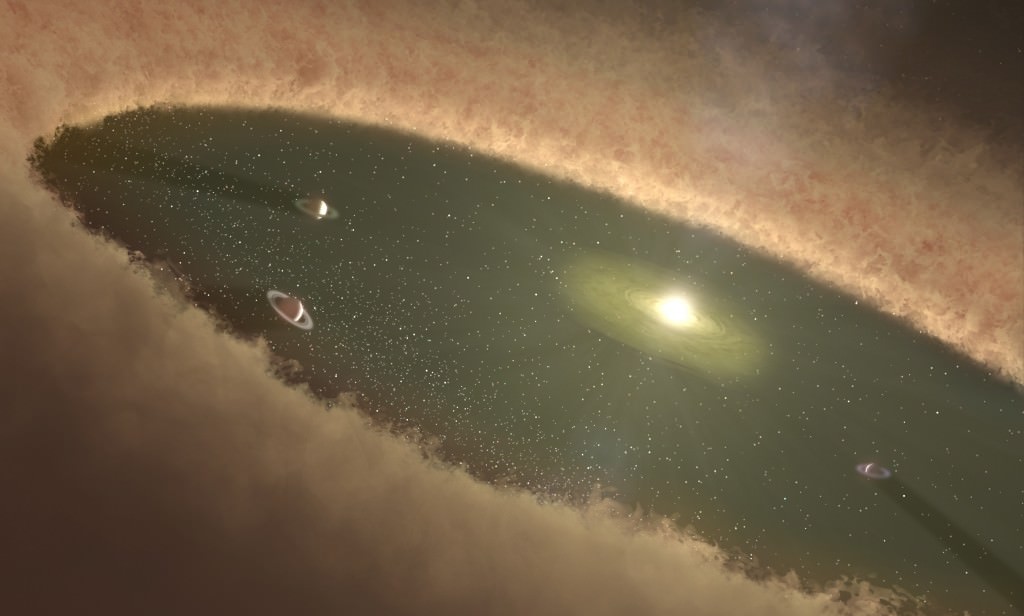Recently astronomers have discovered Jupiter-sized planets orbiting at extremely large distances from giant stars. How can these stars end up with such big planets at such extreme orbits? A team of researchers has proposed that the answer is that the stars steal those planets from their neighbors. Giant stars have a lot of trouble forming very massive planets.
Even though there’s a lot of material in their protoplanetary disks that is more than happy to agglomerate to form heavy planets, the stars themselves are not very good at nurturing those newborn planets. The stars give off such intense amounts of UV radiation that they can boil away all the hydrogen and helium throughout their systems, preventing planets from getting to the size of Jupiter or larger. And yet despite that very clear line of thinking, astronomers with the BEAST (B-star Exoplanet Abundance STudy) collaboration at the University of Sheffield have identified exactly that scenario: Jupiter-size planets orbiting giant stars.
More intriguingly, these planets orbit hundreds of times further away from their stars than the Earth does from the Sun. As Dr. Richard Parker, a Lecturer in Astrophysics in the University of Sheffield’s Department of Physics and Astronomy, explained, “The BEAST collaboration has discovered at least two super-Jovian planets orbiting massive stars.
Whilst planets can form around massive stars, it is hard to envisage gas giant planets like Jupiter and Saturn being able to form in such hostile environments, where radiation from the stars can evaporate the planets before they fully form. ” One way to explain this discrepancy is if those planets didn’t form with the stars that they currently orbit, as researchers at the University of Sheffield recently found. Dr Emma Daffern-Powell, co-author of the study from the University of Sheffield’s Department of Physics and Astronomy, explained, “Our previous research has shown that in stellar nurseries stars can steal planets from other stars, or capture what we call ‘free-floating’ planets.
We know that massive stars have more influence in these nurseries than Sun-like stars, and we found that these massive stars can capture or steal planets – which we call ‘BEASTies’. ” Stars tend to form in clusters, all sharing the same parent gas cloud which fragments into dozens or even hundreds of stars at once. With their larger gravity, the massive stars are perfectly capable of ripping planets away from their neighboring systems and capturing them into orbits of their own.
“Essentially, this is a planetary heist. We used computer simulations to show that the theft or capture of these BEASTies occurs on average once in the first 10 million years of the evolution of a star-forming region,” said Daffern-Powell. The researchers studied extensive simulations and found that this was indeed a plausible scenario.
We still don’t know how common planetary theft is throughout the galaxy, or if it’s just confined to this very special case. Further detective work is definitely needed. The post Massive Stars don’t Always Grow Their own Planets.
Sometimes They Steal Them appeared first on Universe Today. .
From: universetoday
URL: https://www.universetoday.com/157525/massive-stars-dont-always-grow-their-own-planets-sometimes-they-steal-them/



